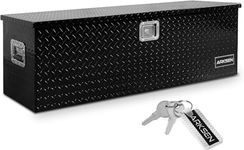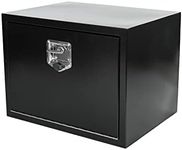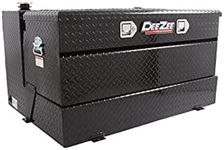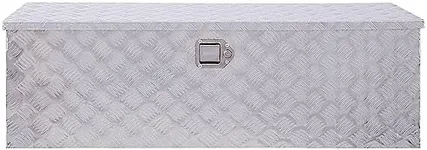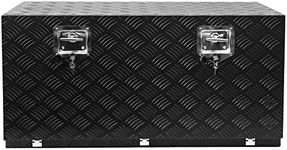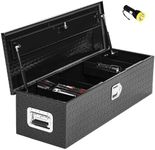Buying Guide for the Best Truck Tool Boxes
Choosing the right truck tool box is essential for keeping your tools organized, secure, and easily accessible. When selecting a truck tool box, consider the size of your truck bed, the types of tools you need to store, and how often you need to access them. Here are some key specifications to consider when making your decision.MaterialThe material of the truck tool box is important because it affects durability, weight, and resistance to weather and corrosion. Common materials include aluminum, steel, and plastic. Aluminum is lightweight and resistant to rust, making it a popular choice. Steel is heavier and more durable but can rust if not properly treated. Plastic is lightweight and resistant to corrosion but may not be as durable as metal options. Choose a material based on the level of durability you need and the environmental conditions your tool box will be exposed to.
Size and CapacitySize and capacity refer to the dimensions of the tool box and how much it can hold. It's important to measure your truck bed to ensure the tool box fits properly. Tool boxes come in various sizes, from compact models for small trucks to larger ones for full-sized trucks. Consider the number and size of tools you need to store. If you have a lot of large tools, you'll need a bigger box with more capacity. If you only have a few small tools, a smaller box may suffice.
Type and StyleThere are several types and styles of truck tool boxes, including crossover, chest, side-mount, and wheel-well boxes. Crossover boxes sit behind the cab and span the width of the truck bed, offering easy access from the sides. Chest boxes sit on the floor of the truck bed and provide more storage space but may be harder to access. Side-mount boxes attach to the sides of the truck bed, leaving the floor space free. Wheel-well boxes fit over the wheel wells, utilizing otherwise wasted space. Choose a type and style based on how you want to access your tools and how much bed space you need to keep free.
Locking MechanismThe locking mechanism is crucial for securing your tools and preventing theft. Common locking mechanisms include key locks, combination locks, and padlocks. Key locks are straightforward and secure, but you need to keep track of the key. Combination locks eliminate the need for a key but require you to remember the combination. Padlocks offer flexibility, as you can choose the level of security you need. Consider how secure you need your tools to be and how convenient you want the locking mechanism to be.
Weather ResistanceWeather resistance is important to protect your tools from the elements. Look for tool boxes with weather seals, gaskets, and reinforced lids to keep out water, dust, and debris. Some tool boxes are designed to be completely waterproof, while others offer varying levels of resistance. If you live in an area with harsh weather conditions or plan to store sensitive tools, opt for a tool box with high weather resistance.
InstallationInstallation refers to how the tool box is mounted to your truck bed. Some tool boxes require drilling into the truck bed, while others use clamps or other non-permanent methods. Drilling provides a more secure and permanent installation but may damage your truck bed. Non-permanent methods are easier to install and remove but may not be as secure. Consider how comfortable you are with installation and whether you want a permanent or temporary solution.

